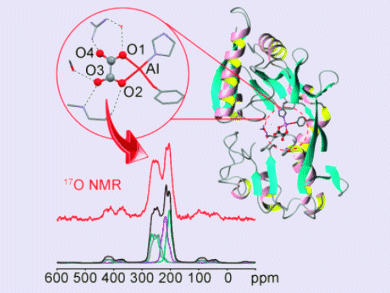In the first Review this week, A. Thomas describes functional materials made out of hard and soft porous frameworks. How can such materials be synthesized to contain organic groups as part of the pore wall and what applications in catalysis or optoelectronics, for example, are conceivable?
In a second Review, M. Baldus et al. write about performing solid-state NMR on complex biomolecules. What are the challenges the opportunities? E. A. Crane and K. A. Scheidt et al. discuss the Prins macrocyclisation as an efficient ring-closing strategy in natural product synthesis in a Minireview. In an Essay, R. R. Ernst looks at the early years of Bruker and the contributions of Zurich-based researchers to the field of NMR instrumentation. The Highlights deal with the trapping of unstable benzoquinone analogues and enantioselective halocyclizations.
In the Communications section, H. W. Spiess et al. demonstrate the enhancement of 1H and 13C NMR signals using a continuous delivery of parahydrogen by hollow fiber membranes. V.-V. Telkki et al. show how to visualize the gas flow in microfluidic devices by means of combined NMR techniques. G. Wu et al. succeeded in the structural refinement of a protein-bound ligand molecule thanks to multinuclear 17O, 27Al, and 13C NMR spectroscopy (see picture). U. Schwarz-Linek et al. characterized a spontaneously formed Lys-Asp isopeptide bond by NMR spectroscopy and theoretical analysis.




